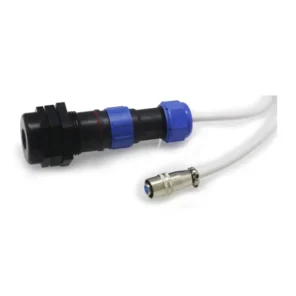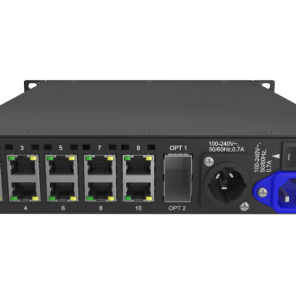Description
The Novastar MCTRL660 PRO has a variety of video connectors:
- Input connectors: 1 × 3G-SDI, 1 × HDMI 1.4a, 1 × single-link DVI
- Output connectors: 6 × Gigabit Ethernet port, 2 × 10G optical port
- Loop output connectors: 1 × 3G-SDI LOOP, 1 × HDMI 1.4a LOOP, 1 × DVI LOOP
The Novastar MCTRL660 PRO has many industry-leading advanced technologies:
- Input of ultra-high color depths: 10-bit/12-bit RGB 4:4:4/YCbCr 4:4:4, with input resolutions up to 1920×1080@60Hz, increasing color expression capabilities by 4096 times compared to 8-bit inputs, and presenting images with rich and delicate colors, smoother transitions, as well as clearer details.
- Supports individual Gamma adjustment for RGB when the color depth of input source is 10-bit or 12-bit, which effectively controls image non-uniformity under low grayscale and white balance offset to improve image quality.
- Low latency: Less than 1 ms (when the start position of image is 0).
- Dual working modes: working as sending card and fiber converter.
- One-click backup and recovery, quickly recovering previous screen configurations to deal with sudden on-site failure.
- Image mirroring, allowing for more cool and dazzling stage effects.
- Auto LED screen configuration.
- Web control.
- Pixel level brightness and chroma calibration.
- Monitoring of inputs.
- Multiple Novastar MCTRL660 PRO units can be cascaded.
The MCTRL660 PRO is mainly used for the rental and fixed fields, such as concerts, live events, security monitoring centers, Olympic Games and various sports centers.
| Connector | Connector Name | Description |
Input |
DVI IN |
|
| HDMI IN |
|
|
| 3G-SDI IN |
Note: 3G-SDI input sources do not support input resolution and color depth settings. |
|
Output |
RJ45 × 6 |
|
| OPT1
OPT2 |
|
|
| DVI LOOP | DVI loop output | |
| HDMI LOOP | HDMI loop output
Support HDCP 1.3 loop output encryption. |
|
| 3G-SDI LOOP | SDI loop output | |
MONITOR |
HDMI | Connect to a monitor to monitor the inputs. The output resolution of this connector is 1920×1080@60Hz (fixed output with a width of 1920 pixels and height of 1080 pixels).
If the input resolution exceeds the monitor resolution, the input will be automatically scaled in proportion and then displayed on the monitor starting from its top left. |
Control |
GENLOCK IN | GENLOCK input connector
Genlock type: Blackburst Input Genlock sync signal to ensure synchronization and same refresh rate between the output signals of cascaded MCTRL660 PRO units and the external Genlock input signal. |
| GENLOCK LOOP | Genlock loop output connector. Up to 8 MCTRL660 PRO units can be cascaded. | |
| ETHERNET | Fast Ethernet port, which connects to PC and supports TCP/IP | |
| USB IN | Input port for cascading devices, or connecting to PC | |
| USB OUT | Output port for cascading devices. Up to 8 MCTRL660 PRO units can be cascaded. | |
Power supply |
100 V–240 V AC | |
Power switch |
ON/OFF | |

























